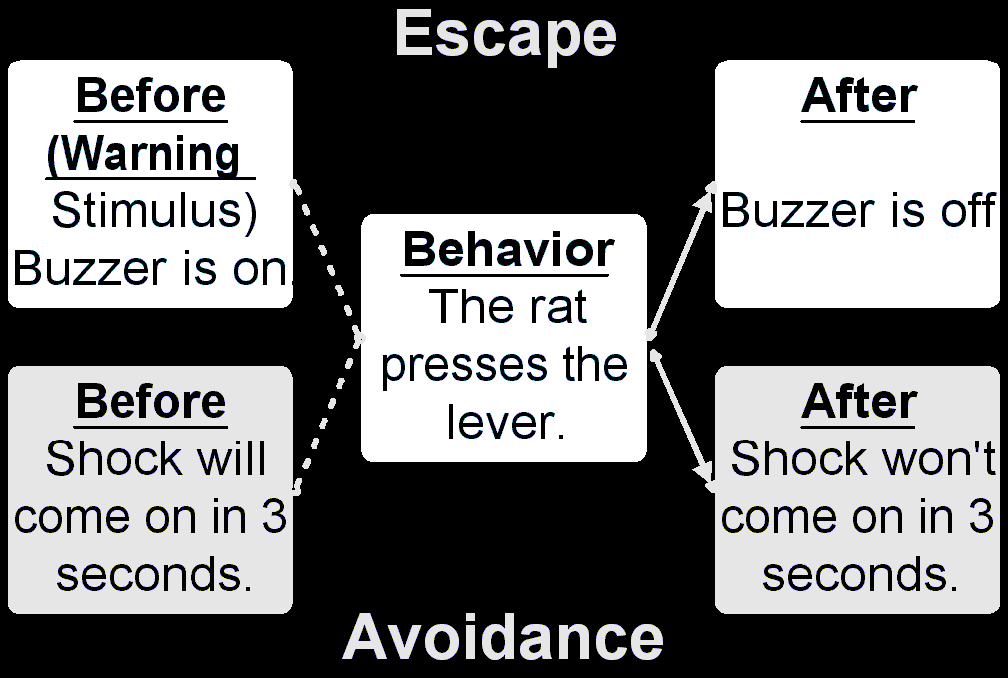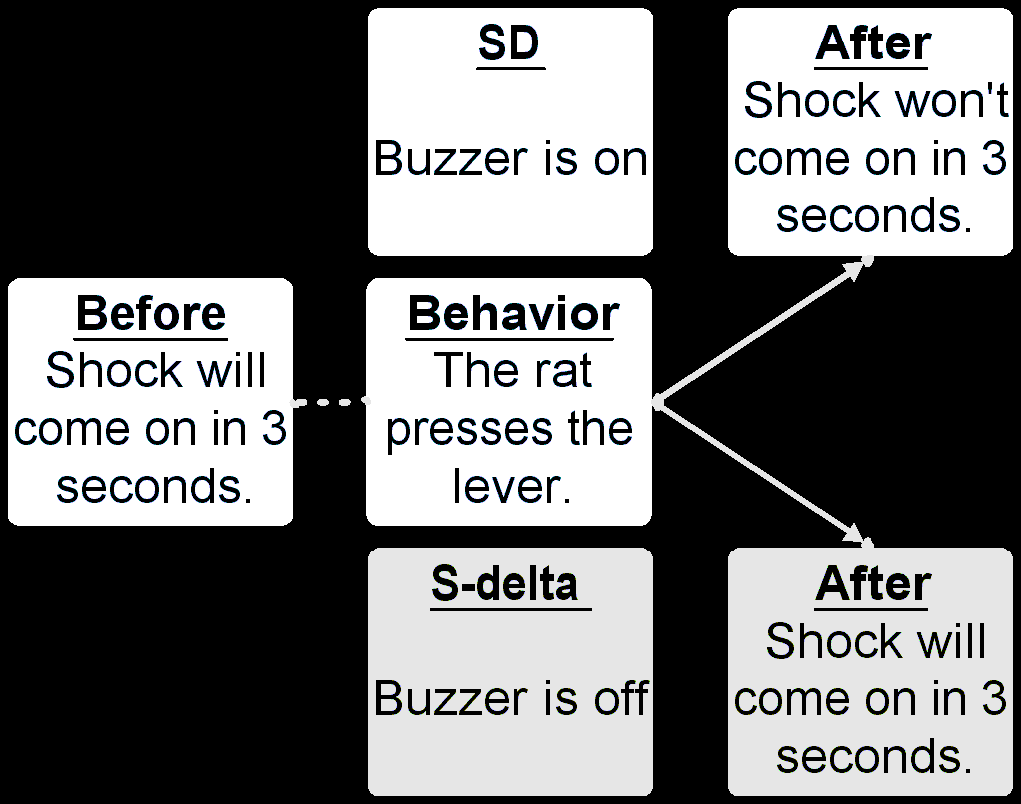Q&A:
Chapter 15 Avoidance
Q. What is the difference between a Warning Stimulus and a Discriminative
Stimulus? (EPB 4.0 page 255)
A. A buzzer goes on, and 3 seconds later a shock comes on for a few
seconds. If the rat presses the lever within the 3 seconds after the
buzzer comes on, the buzzer will go off, and the rat will have avoided
the shock (the shock won't come on). The buzzer is the warning stimulus
that occurs before the presentation of the shock.What is the difference
between a Warning Stimulus and a Discriminative Stimulus? Traditionally,
behavior analysts have analyzed this contingency as if the warning stimulus
were a discriminative stimulus. However, we think it's better to look
at the warning stimulus as the before condition.
Correct One

Traditional One

Q. Why is the warning stimulus the before condition rather than
the SD.
A. Remember that, if we have an SD, we must have an SΔ.
So, let's diagram the contingency as if the buzzer on were the SD.
And, then, of course, the buzzer off will be the SΔ.
(It's the wise student who diagrams his or her way out of confusion.
This diagram may look good at first glance, but there are problems.
Focus on the SΔ contingency.
- The before condition is shock will come on in 3 seconds; but in
our example, the shock won't come on if the buzzer is off, right?
Remember the buzzer is the warning stimulus that precedes the shock.
So if there's no buzzer, there will be no shock in 3 seconds. So we
can't specify shock will come on in 3 seconds as the before condition
in the preceding diagram. So, we don't really have an SΔ;
and if we don't have an SΔ, we don't have an SD,
according to our criteria for diagramming discriminated contingencies.
- We should change the before condition for the SΔ to shock will not come on in 3 seconds. But we can't. Why not? According
to our criteria for diagramming discriminated contingencies, the before
condition must be the same for both the SD and the SΔ contingencies; and that's not possible, if we have the shock will
not come on for the before condition for the SΔ and
the shock will come on for the SD.
|